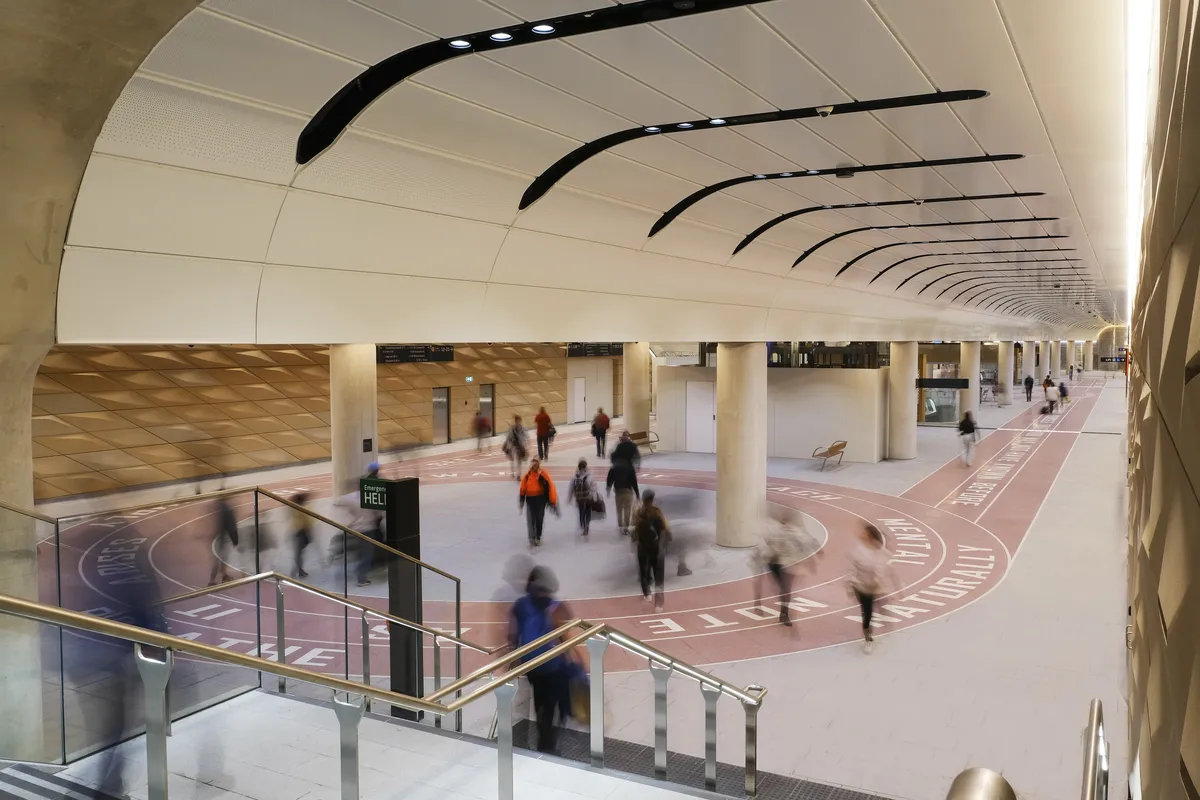Plus: Hardcore legends Scream perform at a Brutalism exhibit at the National Building Museum.

Renovations bring a new look to Sydney’s century-old train station.Photographer: Trevor Mein
Hello and welcome to Bloomberg’s weekly design digest. I’m Kriston Capps, staff writer and editor for Bloomberg CityLab, and your guide to the world of architecture and the people who build things.
This week the Rothko Chapel in Houston closed due to damage from Hurricane Beryl. Sign up to keep up: Subscribe to get this newsletter every Sunday.
Sydney seems to be doing something right.
Australia’s largest city opened a new Metro line this week, offering driverless high-speed trains that arrive every 4 minutes during peak hours. Gleaming new platforms for the Metro City line complete a major renovation project for Central Station, the city’s historic transit hub. For transit-loving Sydneysiders, it’s a brand new day.
The new Metro City line shows that major cities in democratic states can still build ambitious infrastructure projects that function well. And the total makeover for Central Station — an effort that has made the station a destination in itself — shows that performance and design are compatible goals for transit.

Karen Leigh spoke with designers at Woods Bagot — one of the oldest architecture firms in Australia, and the largest in the world to be led by a woman — about their work to transform Central Station. Preserving historic features of the 118-year-old station while making dramatic changes to the building’s concourses proved to be a major challenge for the $672 million overhaul, she writes.

A public art installation by Melbourne artist Rose Nolan winds throughout the station.Photographer: Trevor Mein
While designers at Woods Bagot and John McAslan + Partners put a priority on preserving the station’s historic features, the architects were not afraid to make bold strokes. They prominently feature materials like engineered sandstone, a molded glass-reinforced concrete that closely resembles the natural stone, which was widely used in Sydney’s built environment but is now in short supply. It’s the kind of material choice that delivers on value but also contributes a great deal of character.
Is Central Station a model for transit projects in other major cities? Maybe not: Australia has some of the highest construction costs in the world for megaprojects, and the Metro City line blew past its budget estimates by billions of dollars. Wealthy countries such as Canada, the US and UK have yet to crack how to build transit infrastructure as efficiently as Southern Europe and East Asia.
But Sydney has at least delivered on design and performance, which can’t be said of many similarly expensive transit projects in the US.
















![Anne Hathaway’s Celebrity Shoe Style [PHOTOS]](https://singexpress.news/wp-content/uploads/2024/10/7316aba8adf0fa7f551350cdb6d52baa-360x180.jpg)






















